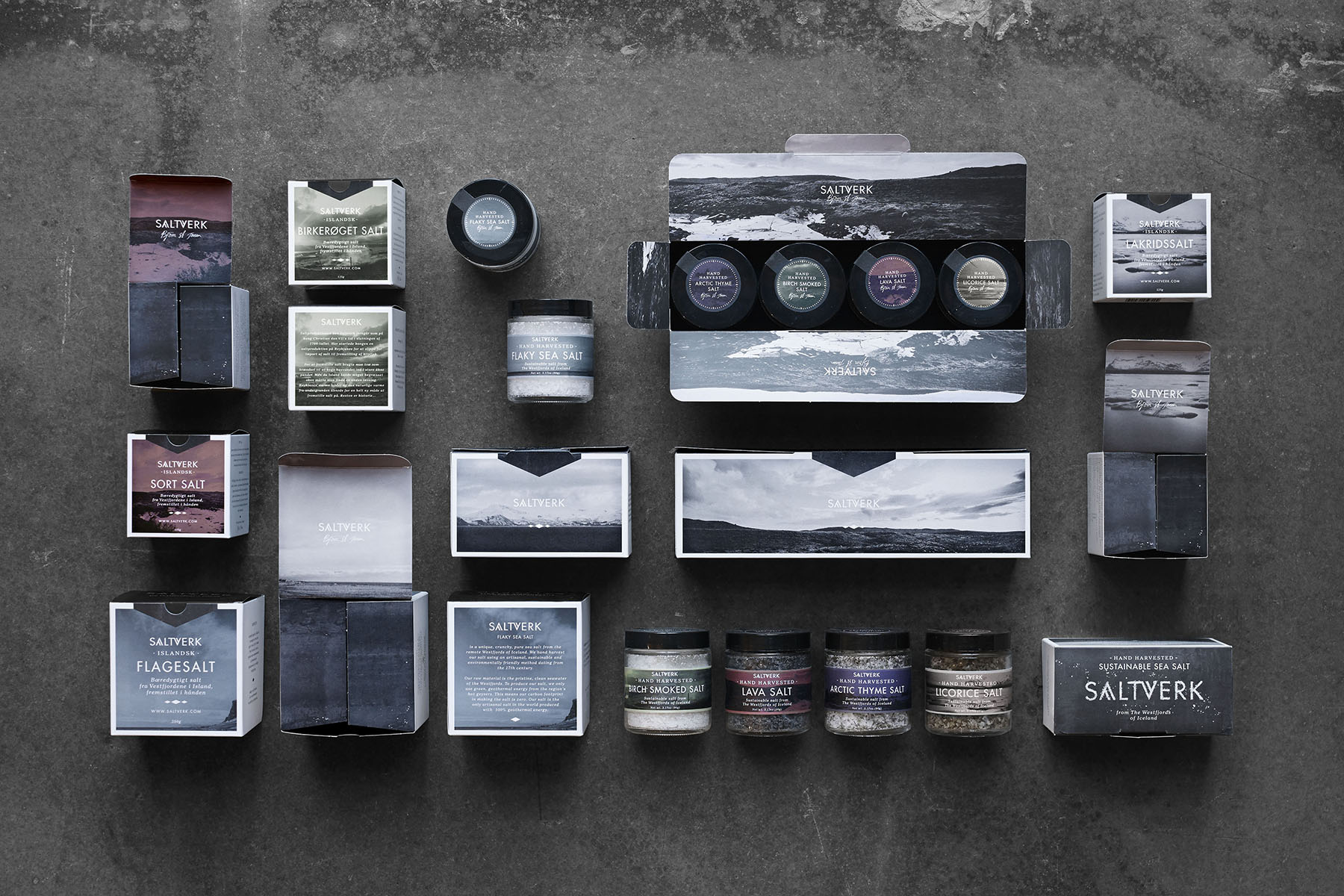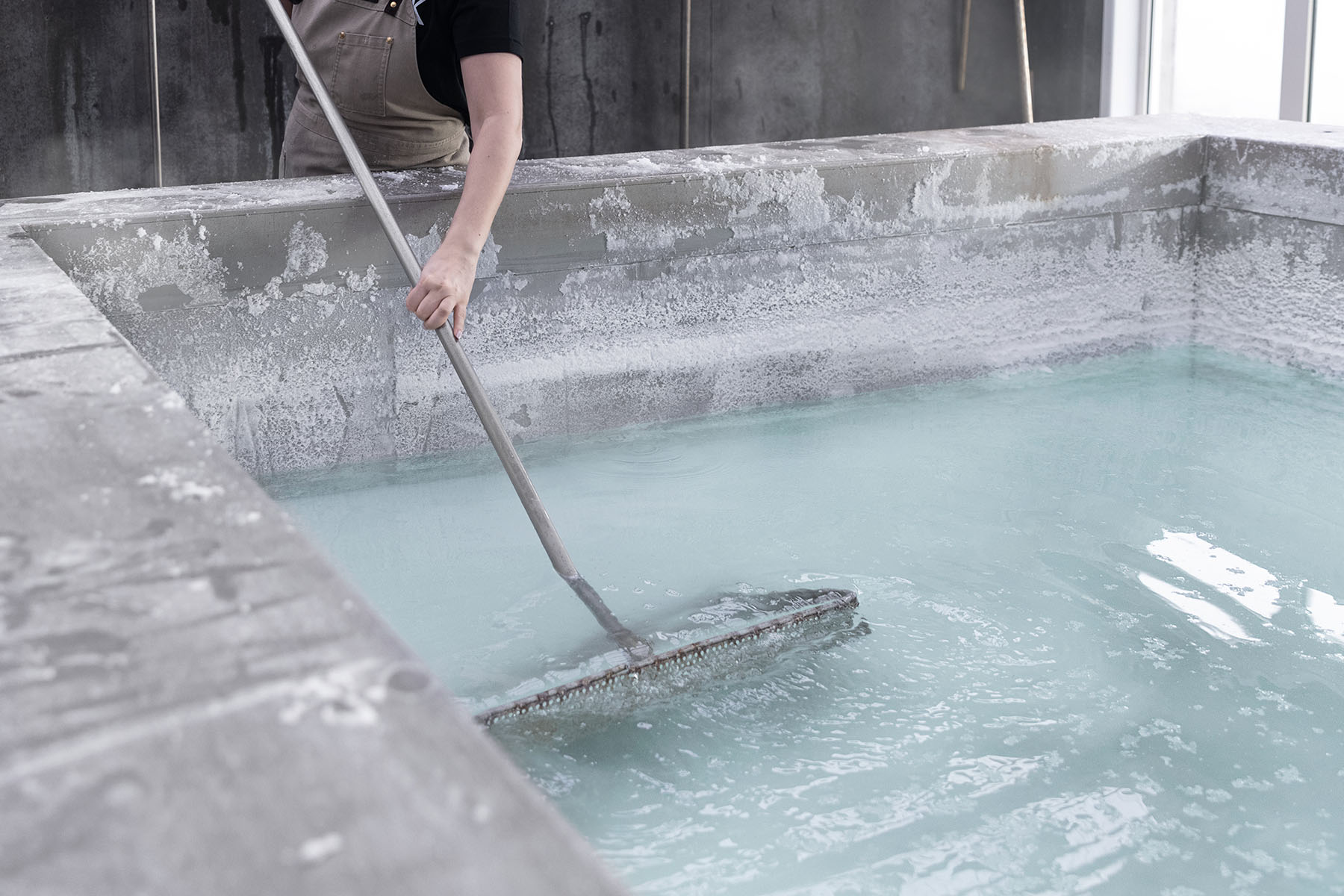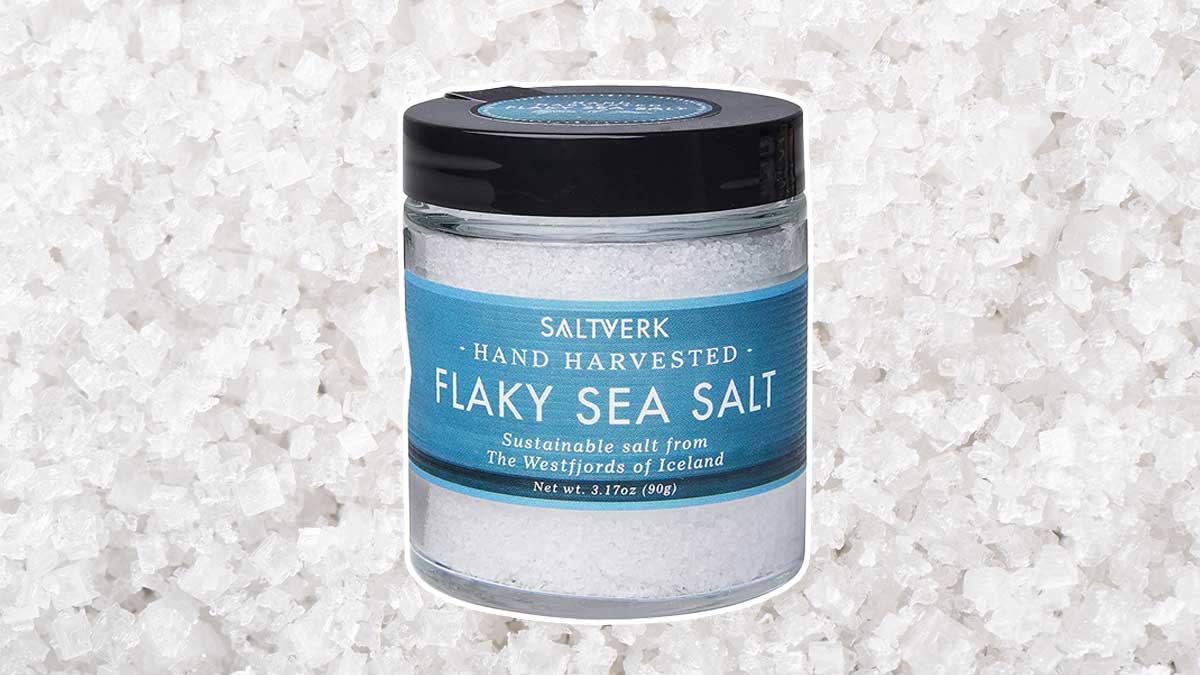All salt is not created equal. Different salts bring different textures, of course, but also different mineral concentrations, and with that, different subtleties in flavor profile.
I found this out on a recent trip to Iceland, where I visited the headquarters of Saltverk, a company that pulls salt out of ocean water using the geothermal energy abundant on the island. In the Westfjords, an area in the northwestern corner of the country full of — you guessed it — fjords, a large PVC pipe protrudes from the deep, cold trenches and feeds seawater up to a large warehouse. This is the same site where an occupying Danish King decided to start salt production in the 18th century, but abandoned the practice after a few decades because, as Saltverk founder Bjorn Steiner Jonsson tells me, “it ruined all his valuable iron by causing it to rust.” In 2011 though, Jonsson took an interest in salt and decided to launch Saltverk in the same area where it all began.
Saltverk produces around 10 tons of salt per month, which may seem like a lot, but relative to big-time industrial production, it is a mere drop in the bucket. Jonsson relies on a painstakingly slow process that involves housing seawater in large wooden tanks (deposited by the aforementioned PVC pipe) and then slowly evaporating water out via geothermal heat. As the volume of the water decreases, the salinity increases and the batches are moved into progressively smaller vats until the salt is ready to be harvested by hand (with a shovel) from a small 5×8’ vat.

Co-Owner Gisli Grimsson says that “making sea salt is a very energy-intensive process, because you have to evaporate over 90% of the water to get quality salt.” However, it has to be slowly distilled in order to get the flaky structure that makes high-end salts so desirable. “Salt is by no means just salt,” he tells me, as you might expect someone who owns a salt company to say. “There is salt produced all around the world in different conditions and using different raw materials and the mineral composition of the seawater can differ depending on location in the world.”
He also points out that table salt as we know it is often mined or made chemically so it does not have nearly the same complex mineral signature as sea salt. Common table salt often also has an anti-caking agent in order to prevent clumping.
The Saltverk salt is beautiful and crunchy and flavorful. It comes as a regular, flaky sea salt, but also in a handful of other flavors that nod to their Icelandic heritage. The best of them all is a Birch smoked salt that packs a ton of smoky flavors (birch is the only tree in Iceland that is able to grow in the wild). They also make salts featuring the likes of Arctic Thyme, seaweed and licorice. A lava salt rounds out the collection — that’s their regular salt with activated charcoal, giving it the look of crushed black lava rock.

Chef Matthew Orlando, the Head Chef and Co-Owner of AMASS in Copenhagen (no. 89 on the World’s Best 50 Restaurants List) and a Noma alum, has been using Saltverk in his restaurants for many years (Noma also uses Saltverk). He claims “the flavor is superior because the process they use is not as intrusive as most other ‘high-quality’ salts.”
Which got me thinking: Does the quality of the salt we use only matter for finishing a dish, or for cooking as well? Does it simply cook down into pure saltiness no matter what? According to Orlando, “Just because the salt dissolves doesn’t mean it loses flavor. That flavor is just transferred to a different medium.” Ah yes, the good old transitive property: works in math class, works in cooking with salt.
Grimsson and Jonsson take great pride in the fact that their salt is used in some of the best restaurants in Scandinavia (and given the region’s culinary rise, the world). The likes of Noma, Bæst (a world-renowned pizza restaurant), Amass, Slippurin (the restaurant that the BBC claims is “reinventing Icelandic cuisine”) and Compagnie NYC are all proponents of Saltverk. Grimmson tells me a story about a restaurant in Copenhagen called BRUS, famous for its fermented potatoes. They experimented with dozens of salts before landing on Saltverk as the best option for their recipe.
Gisli Matt, the head chef at Slippurin, says he cooks with Saltverk because it “adds crispiness and umami to a dish. It’s hard to explain, but the flavour is just so much cleaner than a normal table salt.” He goes on to elaborate that a lot of salts are too harsh, but that Saltverk strikes a perfect balance of flavor without being overly harsh.
Chef Eric Bolyard of Compagnie Des Vins Surnaturels in Soho tells me he just bought 30 kilos worth of Saltverk’s product. “Tasting these coarse sea salts side-by-side against your typical kosher salts, it’s so obvious there’s a distinct flavor difference representative of the terroir of its origin,” he says. “Considering we season everything with some form of salt, I ask myself why not touch each element of a dish with something of integrity to bring out its best.”

But does it matter to the layman cooking up mediocre pasta at home? The answer is yes. Why would you not want to use the same product that some of the world’s best and most innovative chefs are using? Whereas you probably don’t need a $1000 chef’s knife to slice out-of-season tomatoes from Kroger, better salt is an easy and affordable way to elevate your cooking on a consistent basis.
Saltverk runs $13 for a 90g jar and less when you buy in bulk. And no, this argument for cooking with better salt doesn’t mean you have to only use premium salt when you cook. But it does mean that you should consider it more often and use it when applicable. And always, always finish with it once your dish is cooked. The difference in flavor and texture Saltverk makes versus table salt or most run-of-the-mill sea salts is huge in my experience.
And beyond the cooking, having it on the table makes for a great conversation piece when guests are over. Now that you’ve gotten the full skinny, go forth and preach the gospel of better salt.
Join America's Fastest Growing Spirits Newsletter THE SPILL. Unlock all the reviews, recipes and revelry — and get 15% off award-winning La Tierra de Acre Mezcal.





















